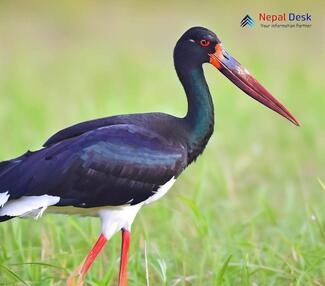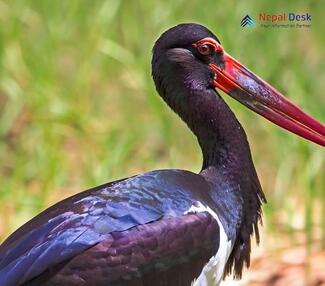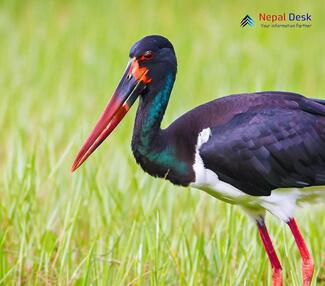For birdwatchers, Nepal is a veritable paradise teeming with an array of exotic species. Among the many avian wonders that call this country home, the majestic Black Stork holds a special place. This elegant and awe-inspiring bird beckons birdwatchers from around the world to venture to Nepal for an unforgettable experience. Let us delve into the fascinating details about the Black Stork in Nepal and provide you with some valuable tips to help you capture a glimpse of this elusive creature. So grab your binoculars, pack your bags, and join us on this exciting adventure!
Unraveling the Mystery of the Black Stork
The Black Stork (Ciconia nigra) is a large wading bird belonging to the family Ciconiidae. Standing at an impressive 3.3 ft (100 cm) tall and sporting an overall dark coloration with a distinctive metallic sheen, this striking bird is truly a sight to behold. The adult Black Storks have striking red legs and a matching beak, further enhancing their remarkable appearance.
Nepal: A Haven for Birdwatchers
Nestled between India and China, Nepal boasts diverse landscapes that range from dense forests to towering mountain peaks and lush wetlands. With more than 900 bird species recorded in Nepal, including numerous rare and endangered species, it's no wonder that birdwatchers flock here to indulge in their passion.
Chitwan National Park: A Gateway to Black Stork Sightings
Located in the Terai region of Nepal, Chitwan National Park is renowned for being one of the best locations for spotting the elusive Black Stork. Thanks to its abundant water sources and diverse habitat types, Chitwan offers optimal conditions for these magnificent birds to thrive.
Best Time for Black Stork Sightings
Black Storks are migratory birds; hence timing your visit right is essential for success. The ideal time to spot the Black Stork in Nepal is during the migratory season. Specifically, late September to early November as they make their way from their breeding grounds in Europe and Central Asia towards the warmer climates of Africa and South Asia.
Birdwatching Tips for Spotting Black Storks
Prioritize early mornings and evenings: Black Storks are most active during these times of the day when they are busy foraging for food.
Bring a good pair of binoculars: With a shy nature and excellent camouflage abilities, Black Storks may be difficult to spot from a distance. A quality pair of binoculars will help bring them into closer focus.
Hire an expert local guide: Enlisting the help of an experienced birdwatching guide familiar with Chitwan National Park can significantly increase your chances of spotting the elusive Black Stork.
Respect your feathered friends: Maintain a respectful distance, don't disturb their habitat, and always adhere to ethical birdwatching practices.
Discovering the magnificent Black Stork amidst the unparalleled beauty of Nepal's landscapes will be an unforgettable experience that you will cherish for years to come. Happy birdwatching!




